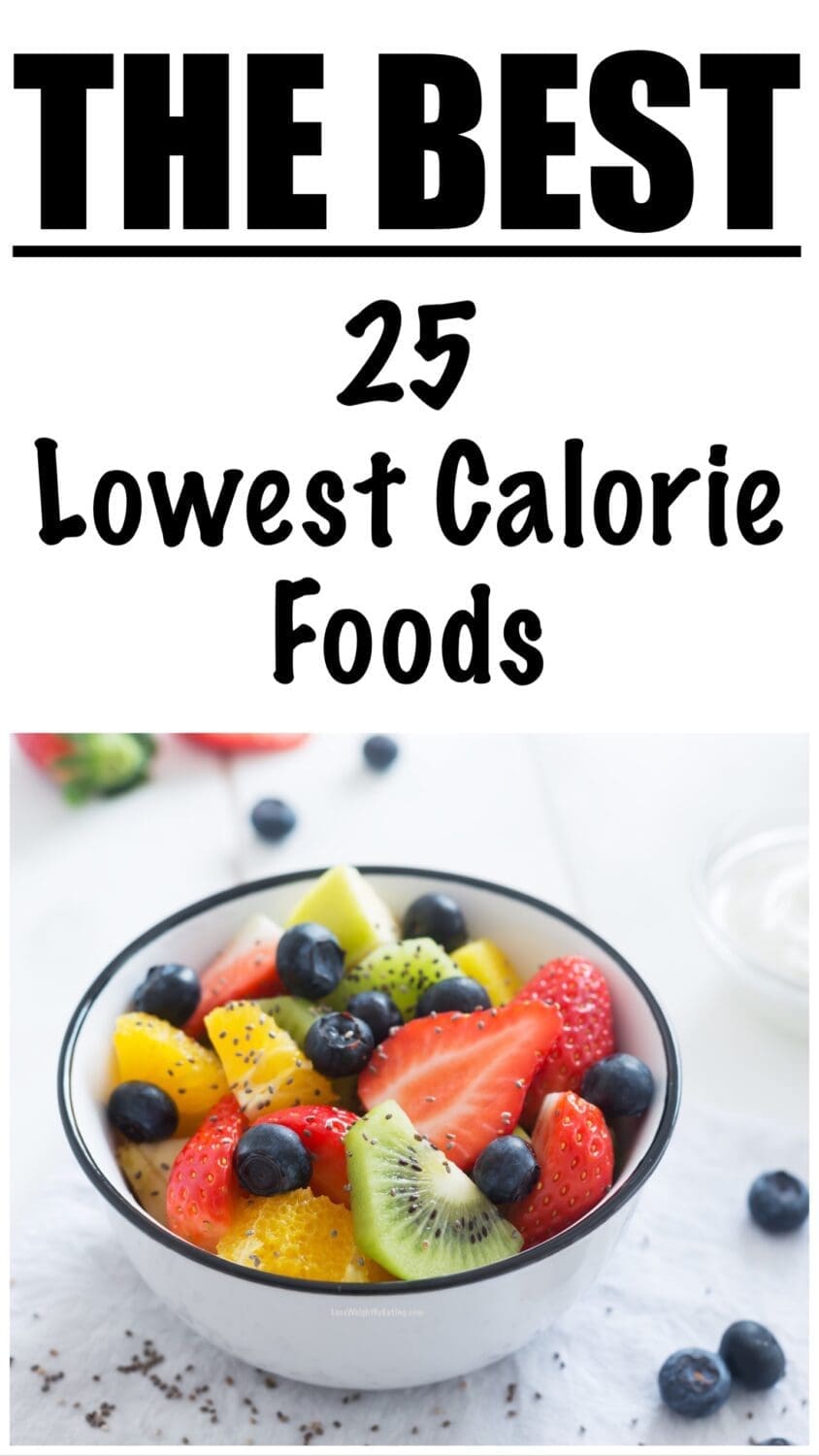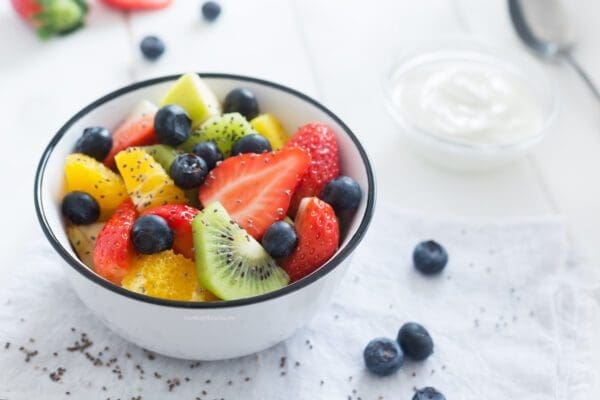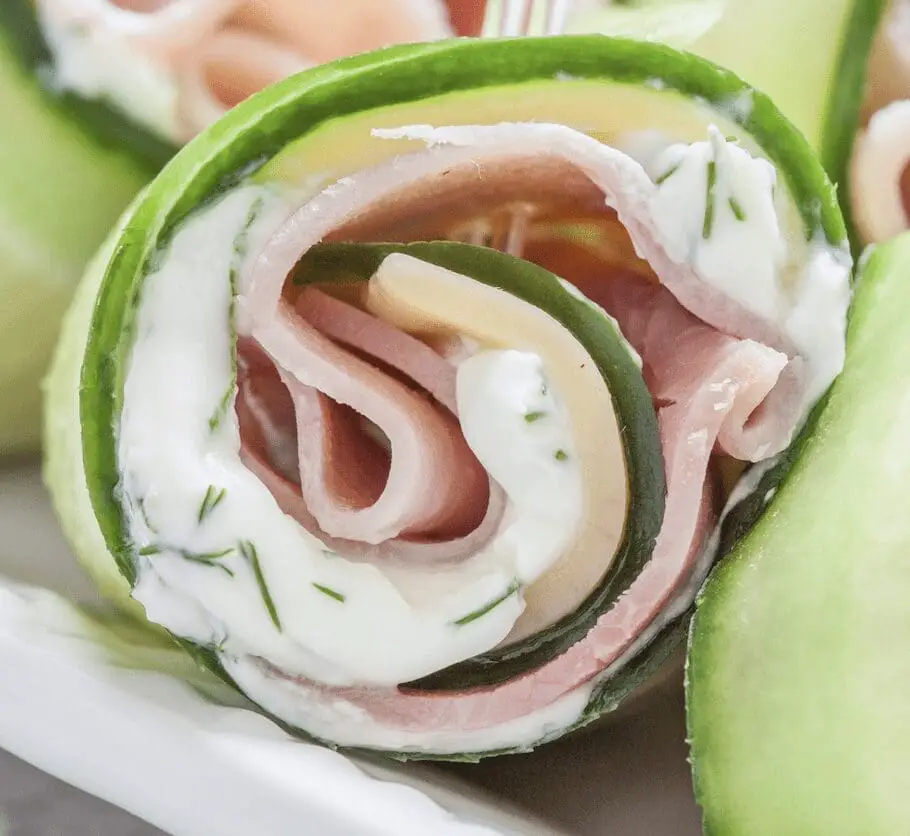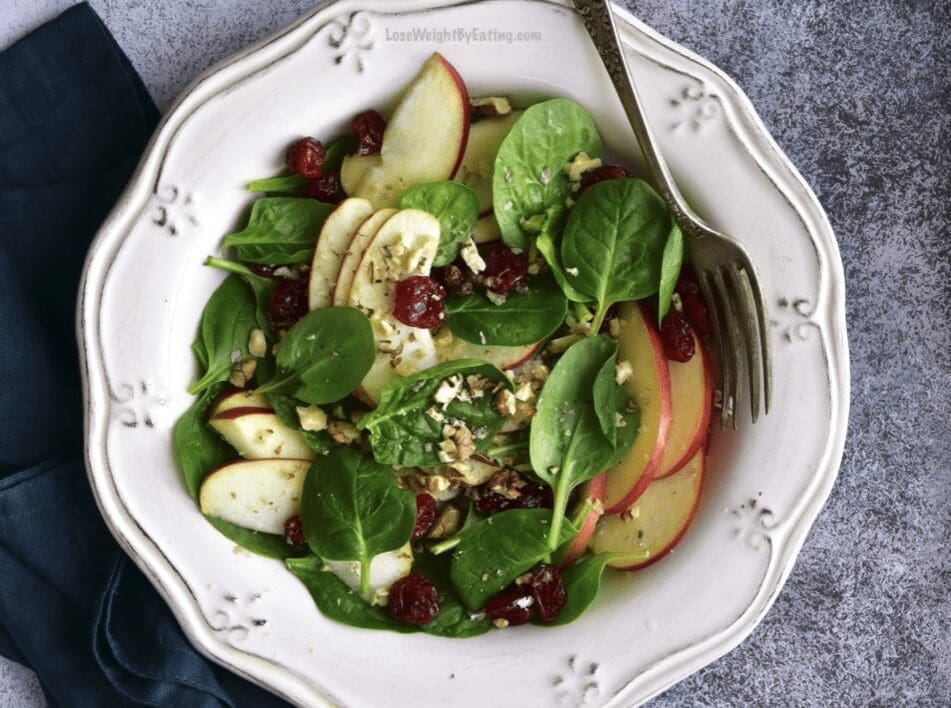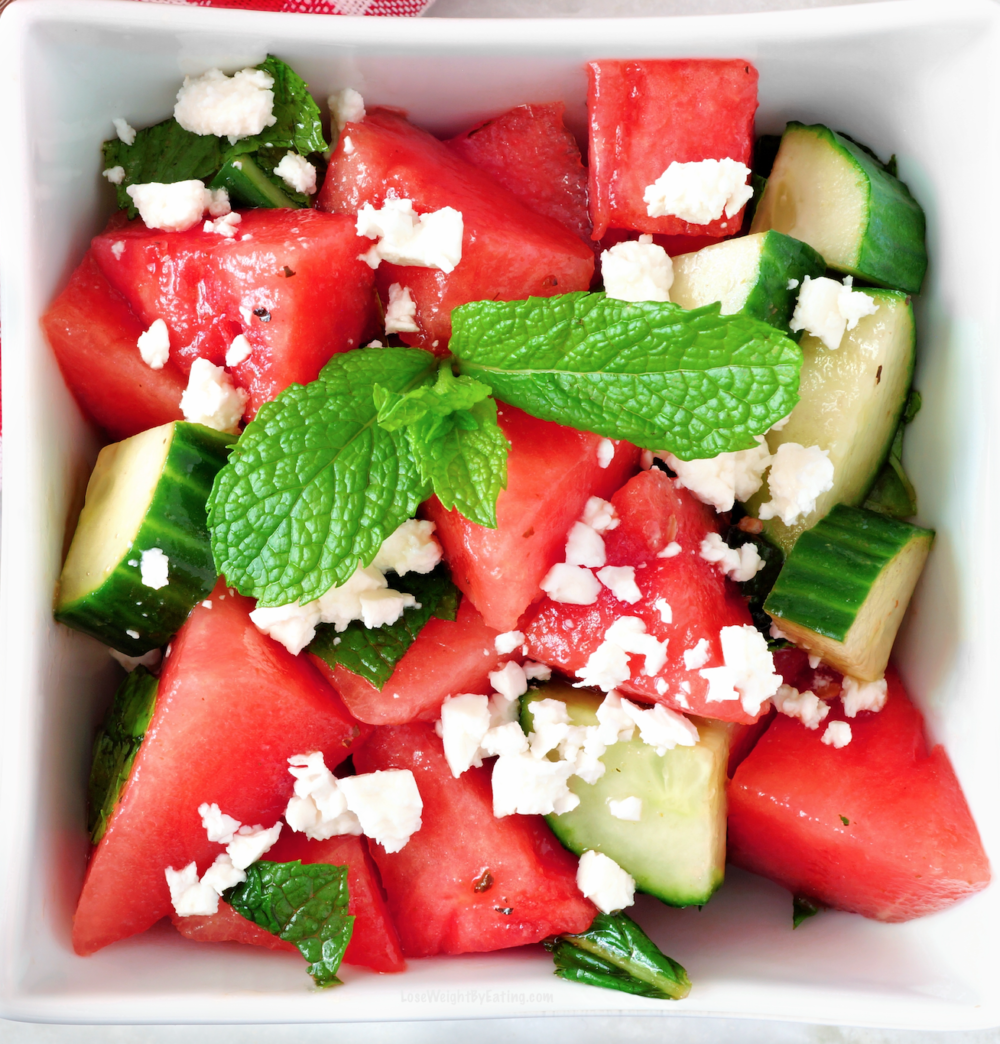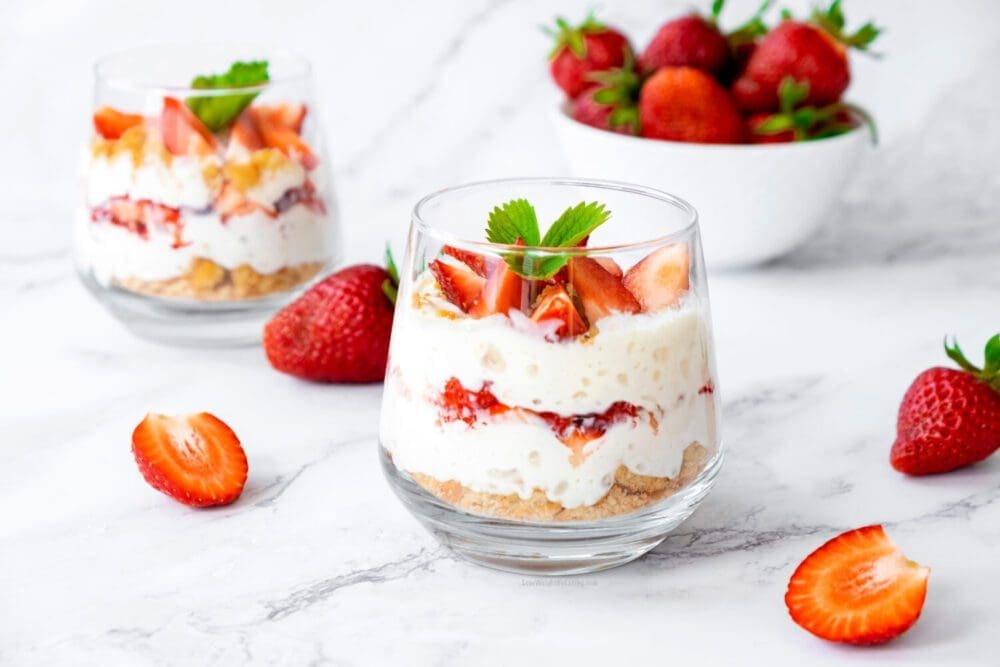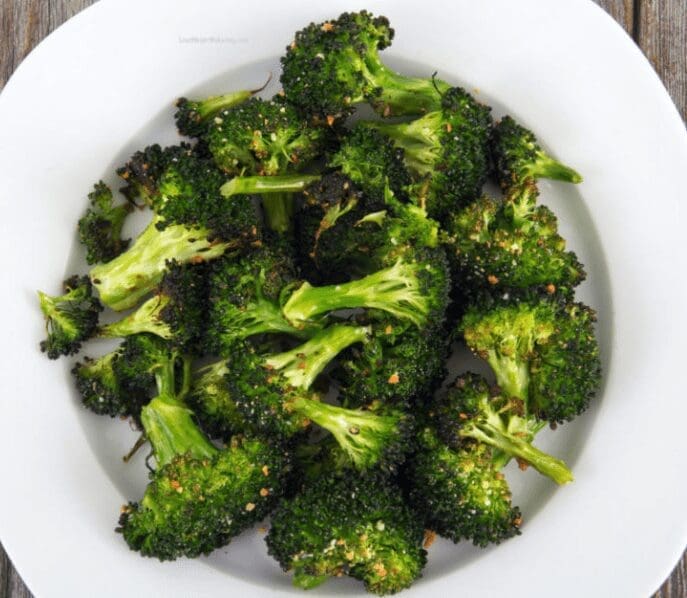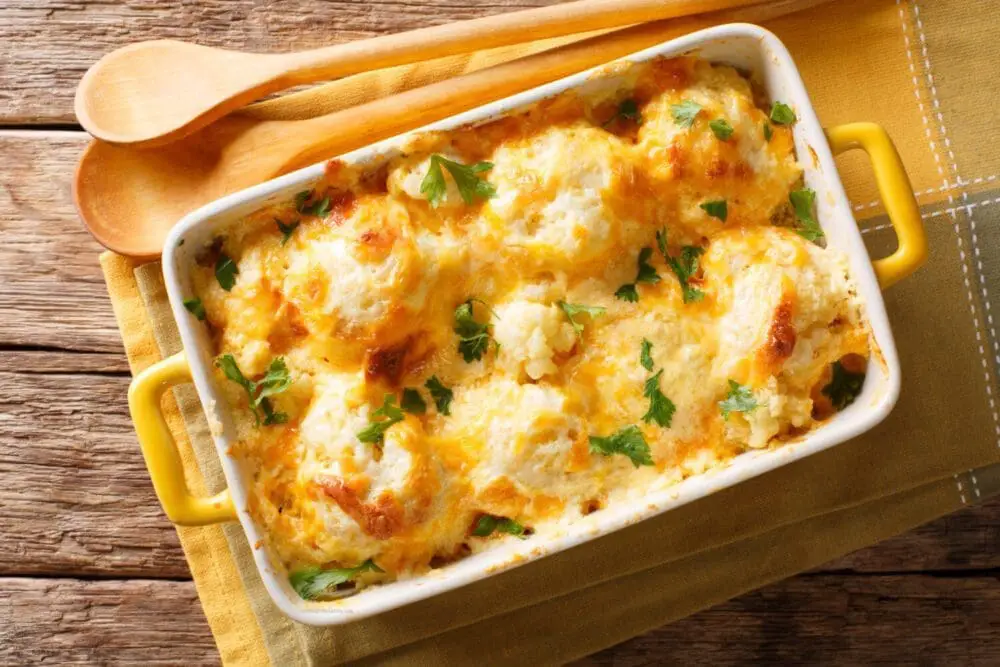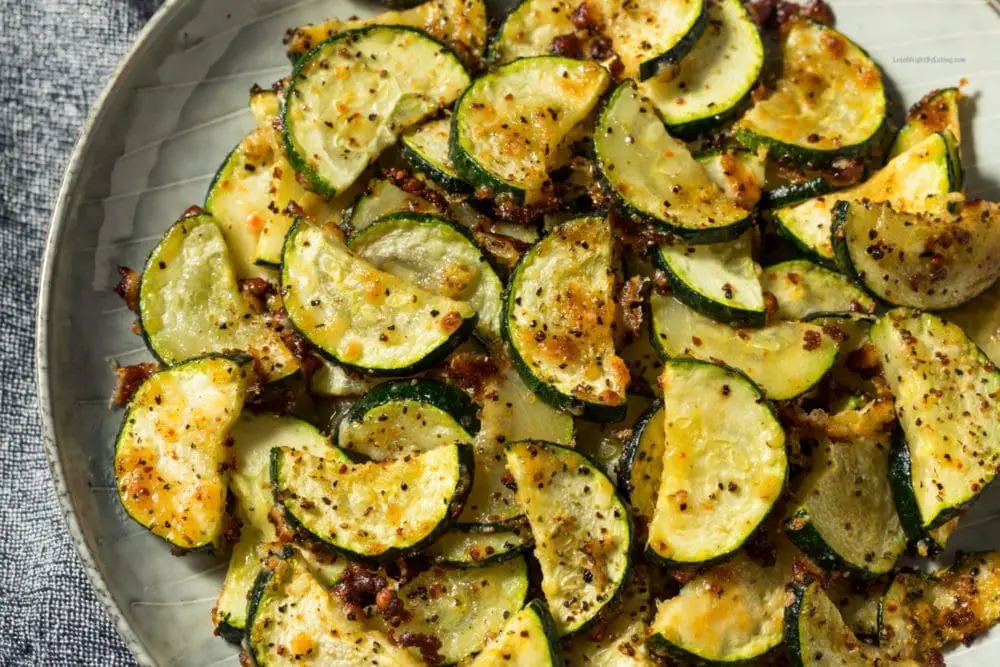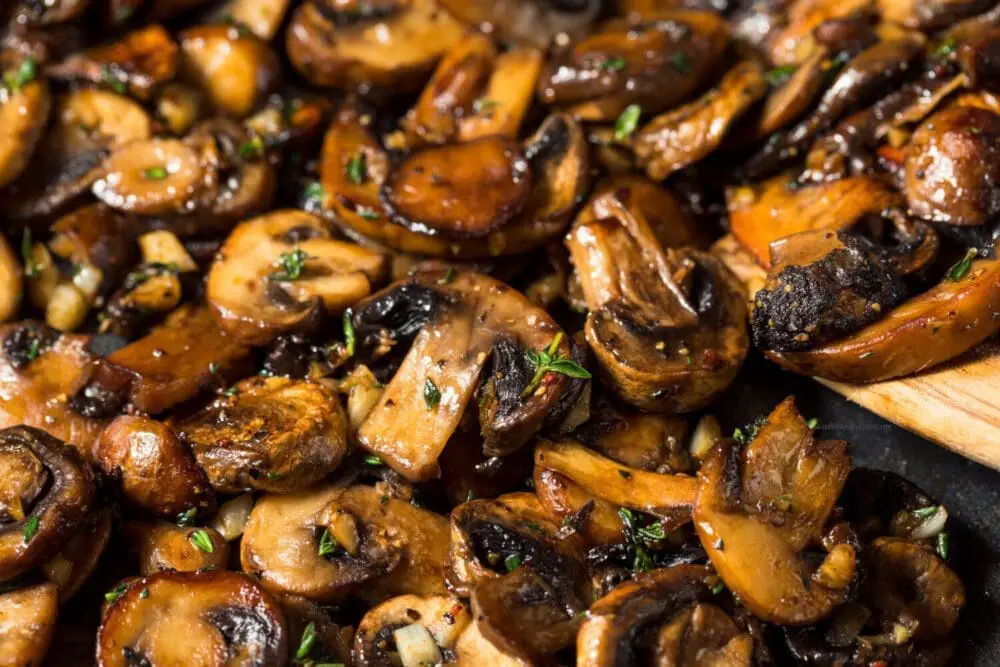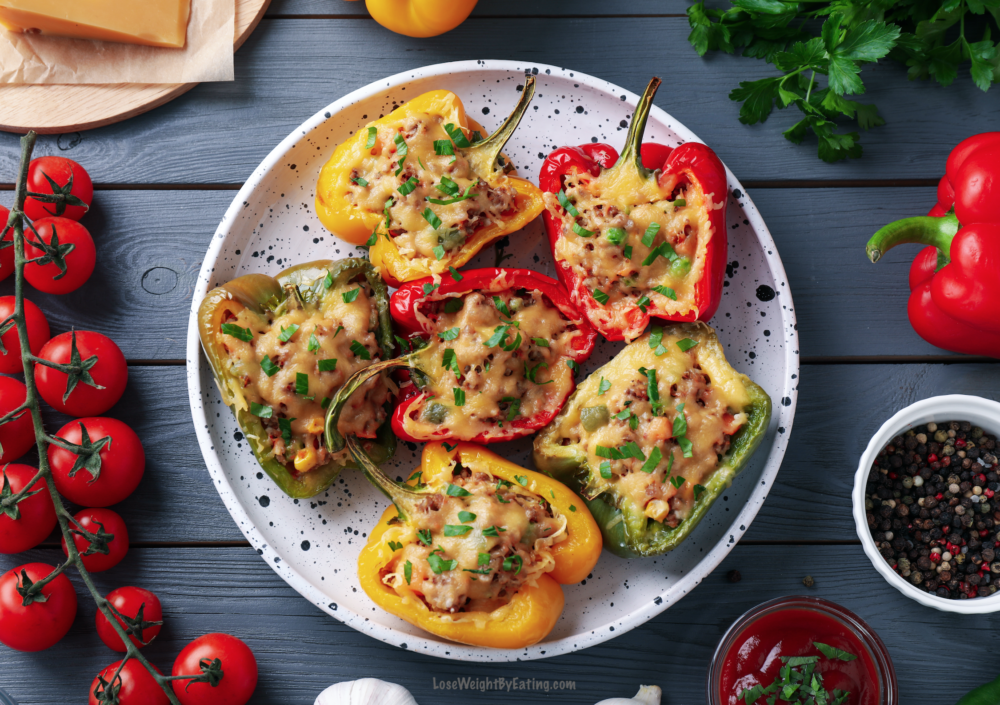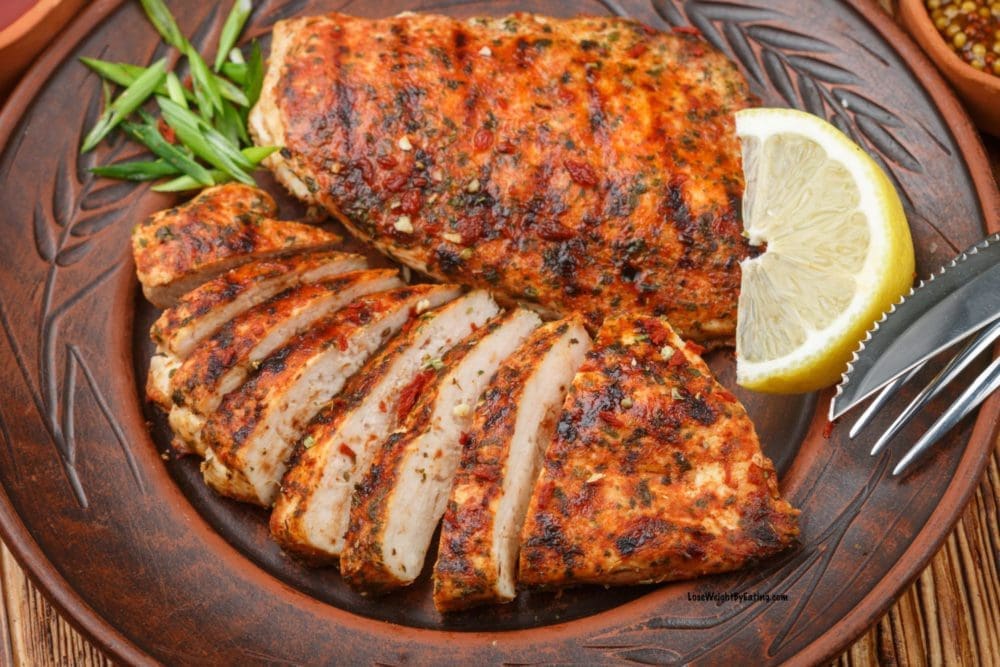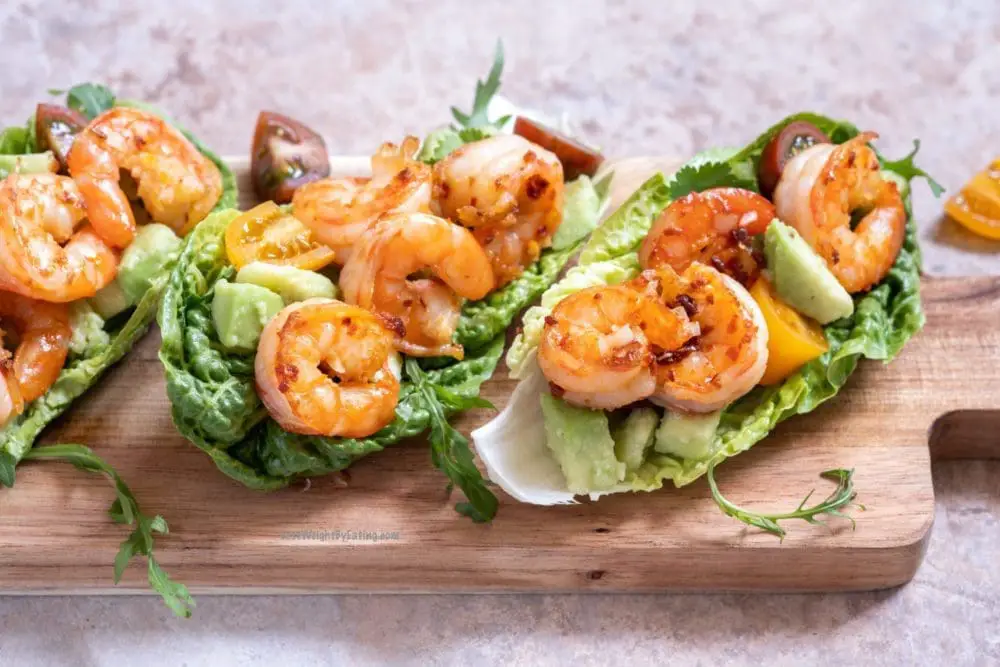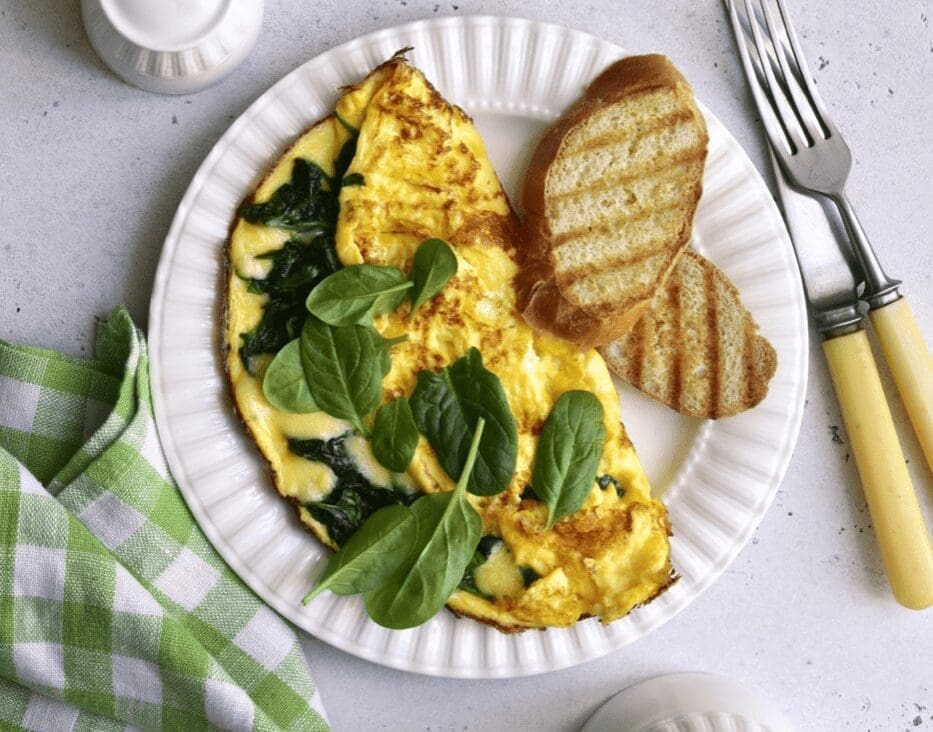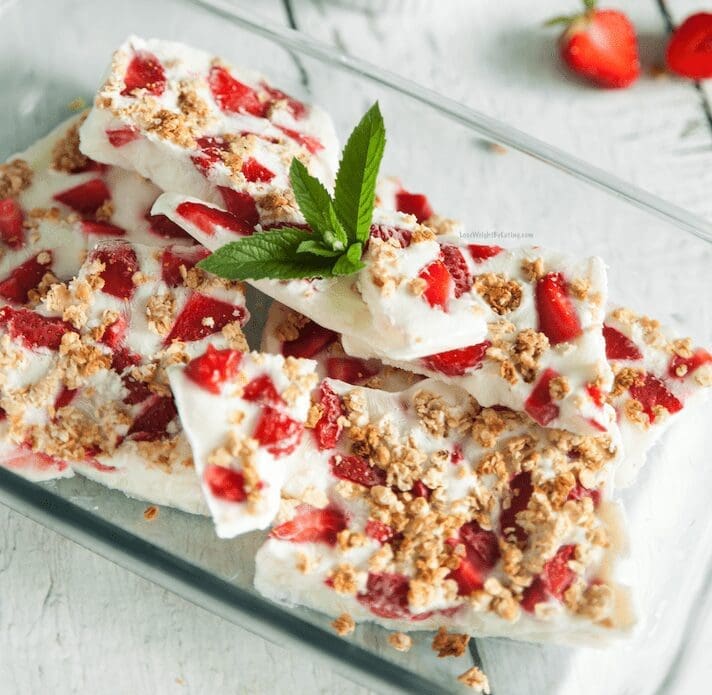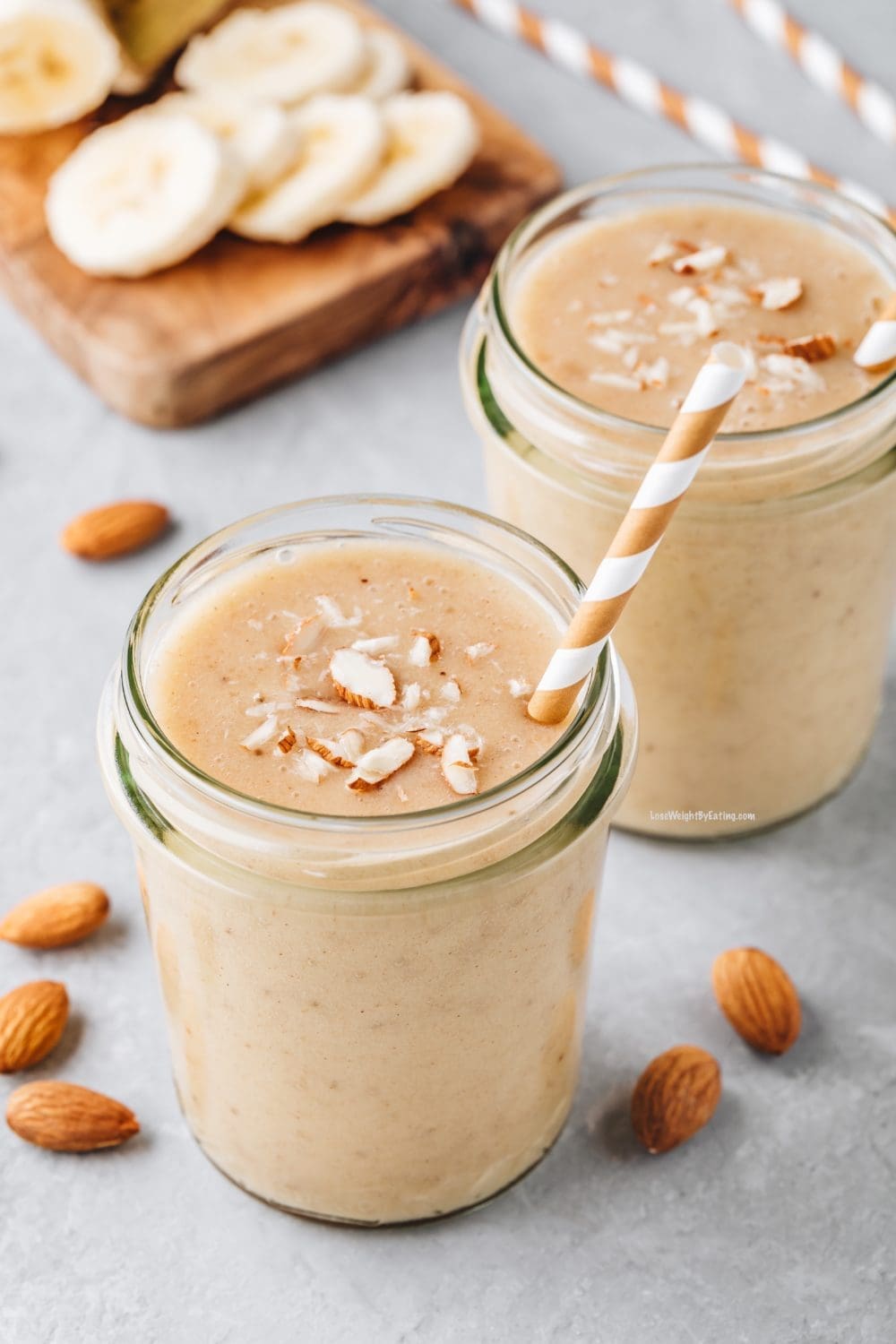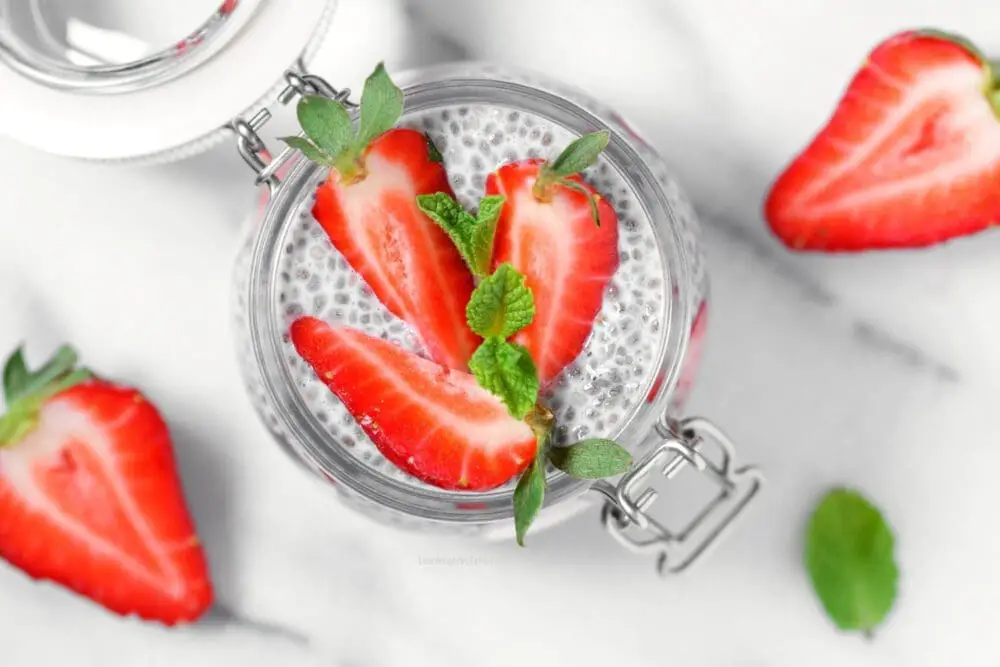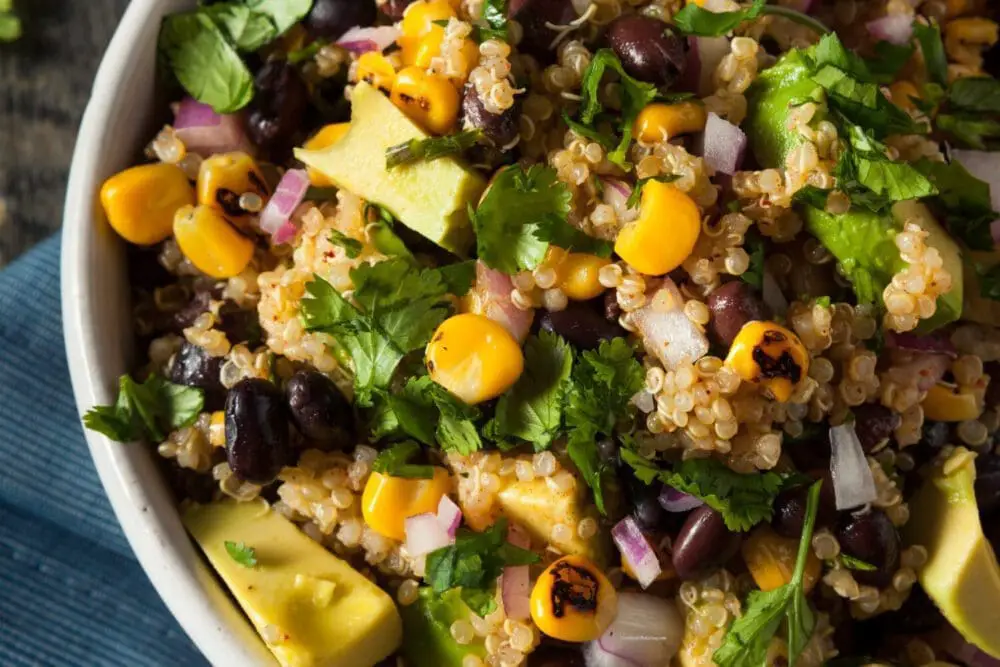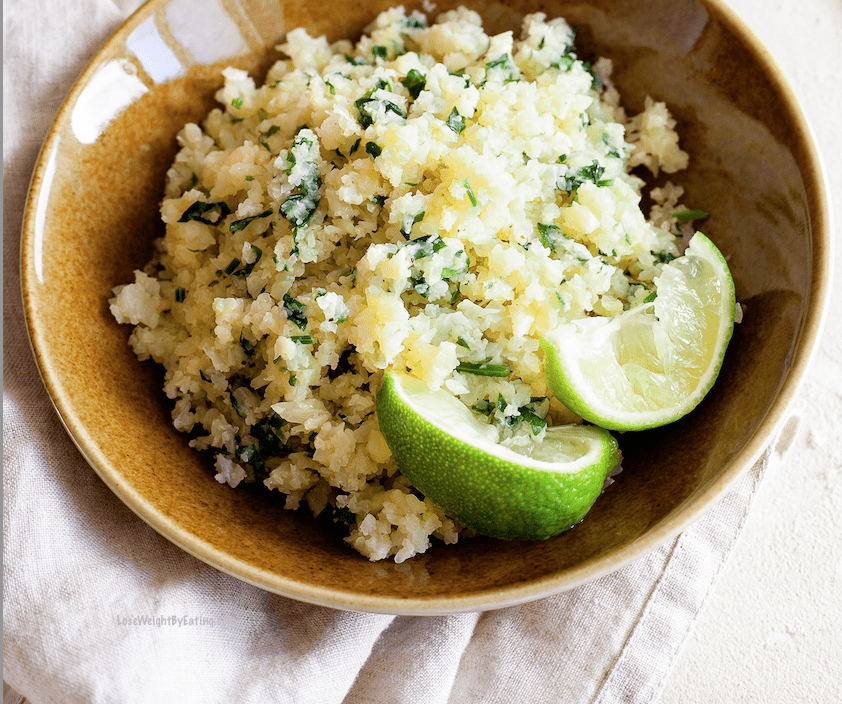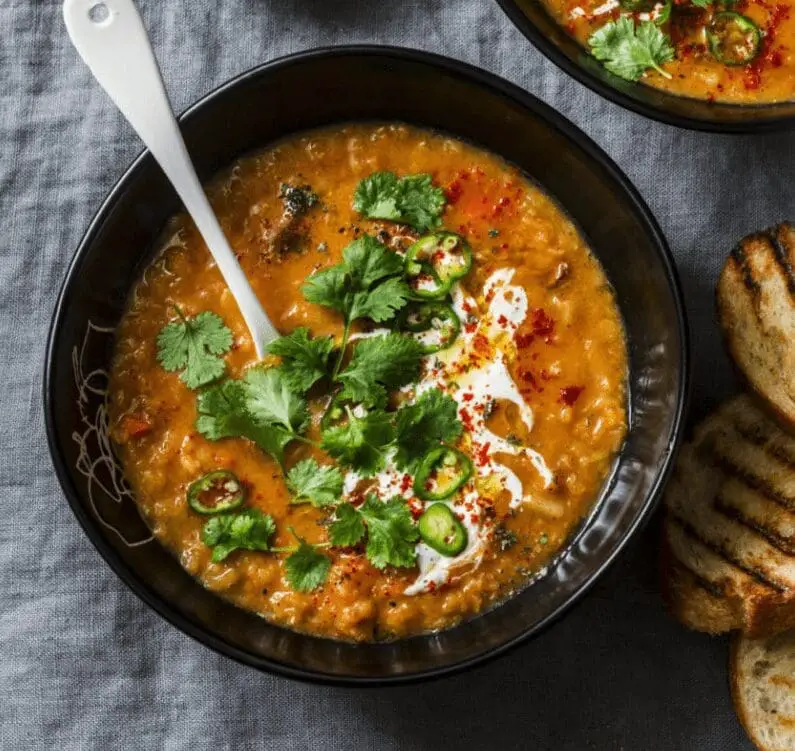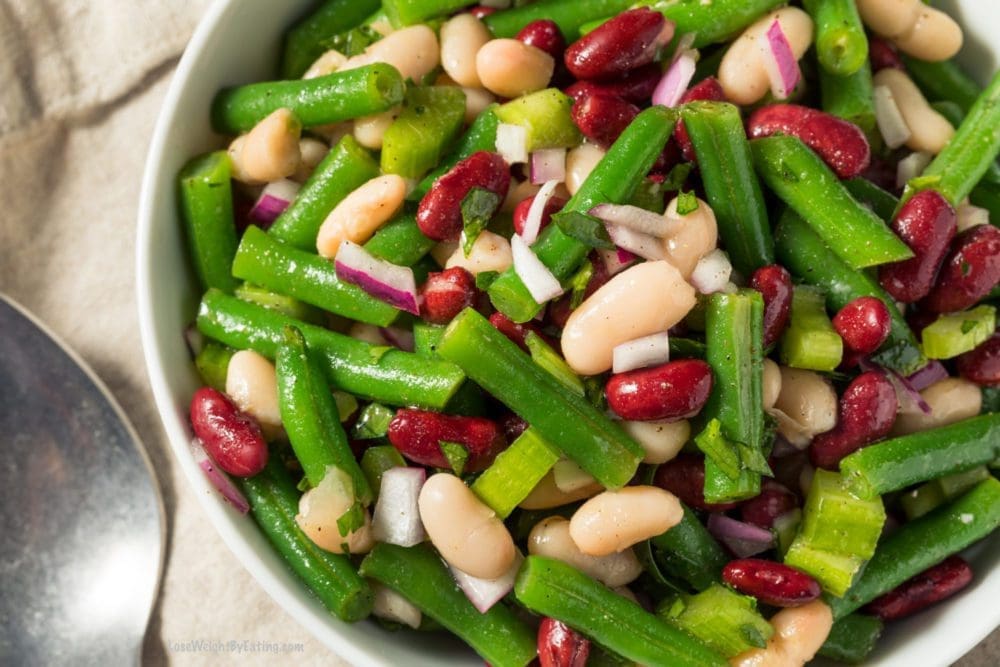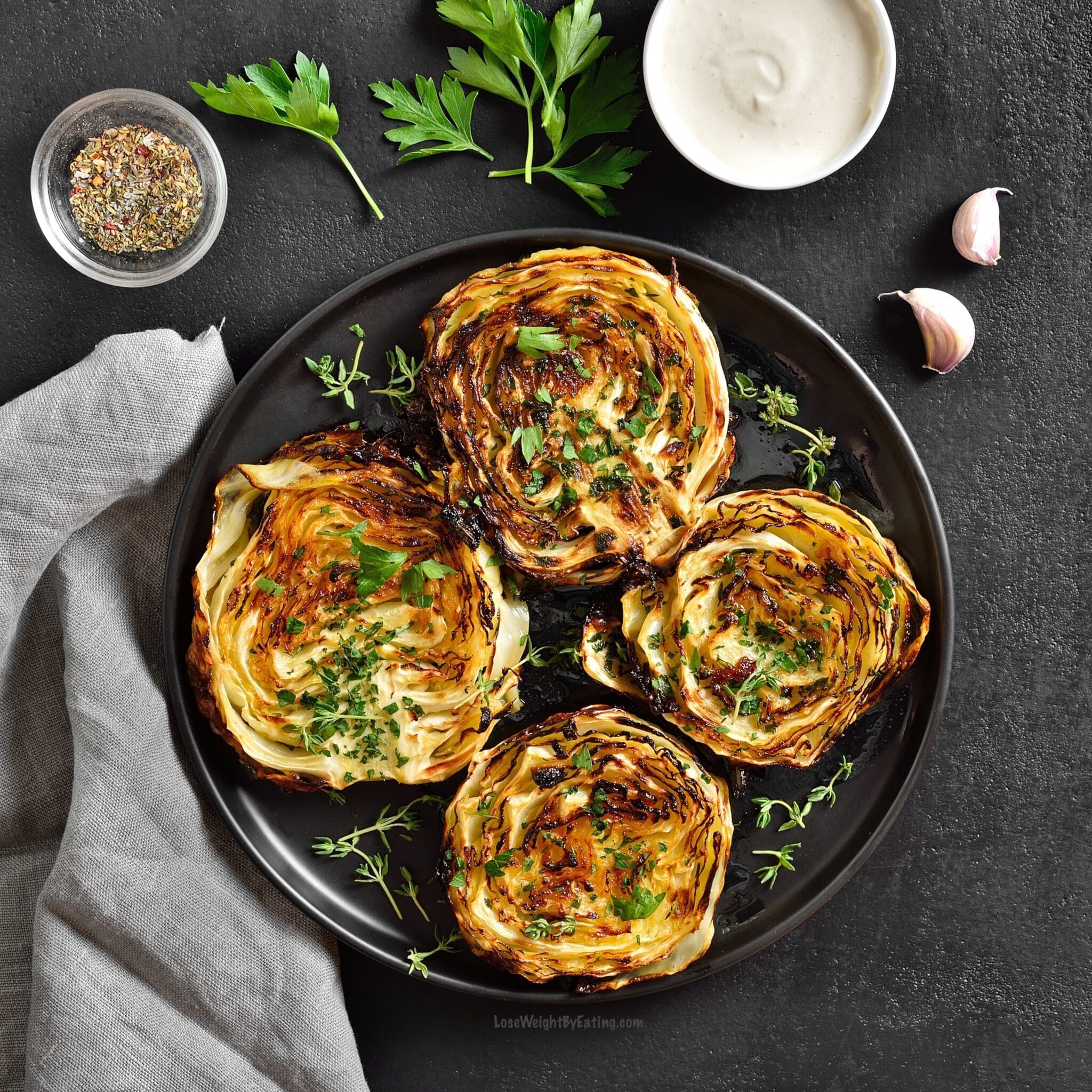Find the 25 Lowest Calorie Foods so you can snack and eat more, for fewer calories! These 25 low calorie foods include recipes, nutritional information and tips to adding them to your diet.
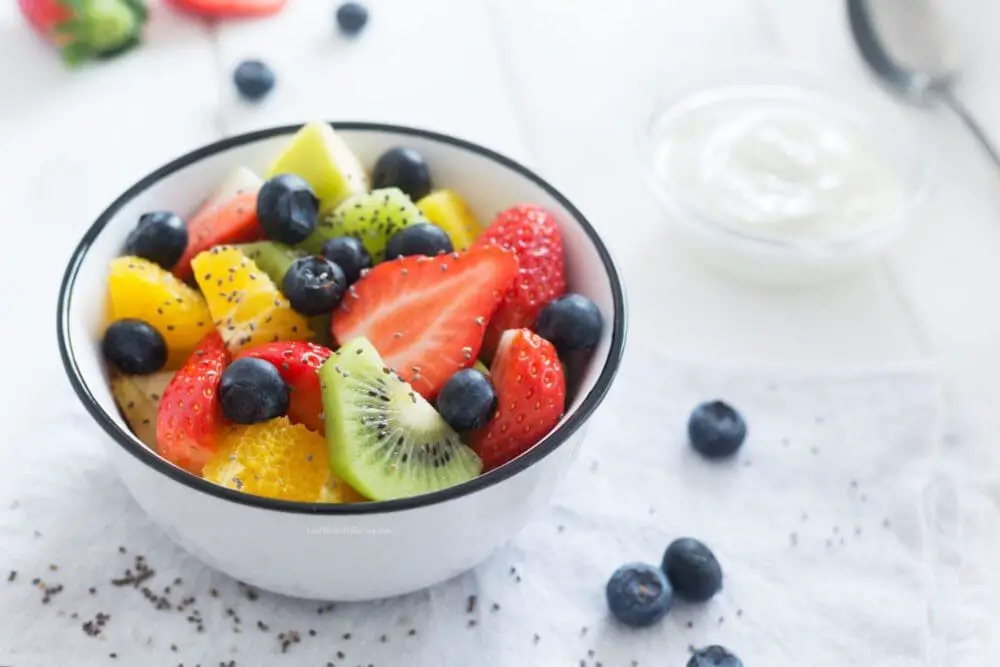

Are you on a mission to shed those extra pounds? Are you looking for healthy food options that won’t derail your calorie count? Look no further!
In this article, I’ll share the 25 Lowest Calorie Foods that will tantalize your taste buds while keeping your waistline in check. F
rom crisp and refreshing vegetables to succulent lean proteins, we’ve got you covered with a wide variety of nutritious options. So, let’s dive in and explore these fantastic foods that will support your weight loss journey!
25 Lowest Calorie Foods: Your Secret Weapon for Weight Loss
Maintaining a healthy weight is essential for overall well-being, and the key to successful weight management lies in consuming fewer calories than you burn.
Incorporating low-calorie foods into your diet is an excellent strategy to create a calorie deficit without compromising on essential nutrients.
Here are 25 mouthwatering low-calorie options that will help you achieve your weight loss goals:
1. Celery (6 calories per stalk)
Celery is a true champion when it comes to low-calorie foods.
This crunchy green vegetable is a staple in weight loss diets, thanks to its high water content and fiber.
Incorporate celery into your meals for a satisfying crunch without adding excess calories.
2. Cucumber (8 calories per 100 grams)
Crisp and refreshing, cucumbers are an ideal snack for those looking to shed a few pounds.
With their high water content and minimal calorie count, cucumbers keep you hydrated and full while providing a satisfying crunch.
3. Spinach (7 calories per cup)
Popeye knew what he was doing when he relied on spinach for strength! This leafy green powerhouse is low in calories and packed with vitamins, minerals, and antioxidants.
Use spinach as a base for salads, blend it into smoothies, or sauté it as a side dish for a nutritious and low-calorie addition to your meals.
4. Watermelon (30 calories per 100 grams)
Craving something sweet? Reach for a slice of juicy watermelon!
This summertime favorite is not only incredibly hydrating but also low in calories. Indulge in this guilt-free treat while staying on track with your weight loss journey.
5. Strawberries (32 calories per 100 grams)
Loaded with antioxidants and vitamin C, strawberries are a delicious and low-calorie option for snacking or adding to your favorite desserts.
Their natural sweetness satisfies cravings while providing essential nutrients.
6. Grapefruit (42 calories per 100 grams)
Start your day on a refreshing note with a tangy grapefruit.
Packed with fiber and vitamin C, this citrus fruit is known for its metabolism-boosting properties.
Enjoy it as a snack or add it to salads for a burst of flavor.
7. Broccoli (55 calories per cup)
Broccoli is a nutritional powerhouse, rich in vitamins, minerals, and fiber.
Its low-calorie content makes it an excellent choice for weight loss. Roast it, steam it, or stir-fry it with your favorite ingredients to create a tasty and healthy meal.
8. Cauliflower (25 calories per cup)
If you’re looking for a versatile low-calorie food, cauliflower is your answer.
From pizza crusts to rice alternatives, cauliflower can be transformed into various delicious dishes while keeping your calorie intake in check.
9. Zucchini (20 calories per cup)
Zucchini is a versatile vegetable that adds a subtle flavor and texture to your meals.
Whether spiralized into noodles or used as a base for low-calorie casseroles, zucchini is a fantastic option for those watching their waistlines.
10. Mushrooms (15 calories per cup)
Mushrooms are not only low in calories but also packed with umami flavor.
They can be a delicious and healthy substitute for meat in many recipes. Add mushrooms to stir-fries, soups, or salads for a delightful culinary experience.
11. Bell Peppers (31 calories per cup)
Colorful and crunchy, bell peppers are low in calories and high in essential nutrients.
These vibrant vegetables are a great addition to salads, stir-fries, or as a crunchy snack with your favorite dip.
12. Chicken Breast (165 calories per 100 grams)
Lean proteins are an important component of any weight loss diet, and chicken breast fits the bill perfectly.
High in protein and low in fat, chicken breast keeps you satiated while providing essential amino acids for muscle growth and repair.
13. Turkey Breast (104 calories per 100 grams)
Turkey breast is a lean meat option that offers a flavorful alternative to chicken.
It is a great source of protein and contains fewer calories than other cuts of poultry.
Enjoy turkey breast in sandwiches, salads, or as a lean protein option in your main meals.
14. Cod (105 calories per 100 grams)
When it comes to seafood, cod is an excellent choice for those watching their calorie intake.
It is low in fat, high in protein, and a good source of omega-3 fatty acids. Bake, grill, or steam cod for a delicious and nutritious meal.
15. Shrimp (85 calories per 100 grams)
If you’re a seafood lover, shrimp is a fantastic low-calorie option.
With its delicate flavor and firm texture, shrimp can be enjoyed in salads, stir-fries, or as a standalone appetizer. It is low in calories and a good source of lean protein.
16. Egg Whites (17 calories per egg white)
Egg whites are a protein-packed food that can be included in your weight loss journey.
They are low in calories and fat while providing essential amino acids. Whip up a delicious omelet or enjoy a fluffy egg white scramble for a nutritious and satisfying meal.
17. Greek Yogurt (59 calories per 100 grams)
Greek yogurt is a creamy and tangy delight that is lower in calories than regular yogurt.
It is packed with protein and calcium, making it a great choice for weight-conscious individuals.
Enjoy Greek yogurt on its own, in smoothies, or as a topping for fruits and granola.
18. Almonds (164 calories per ounce)
While almonds may be higher in calories compared to other items on this list, they are a nutrient-dense snack that offers numerous health benefits.
Packed with healthy fats, fiber, and protein, almonds help keep you satisfied and provide essential nutrients.
19. Chia Seeds (137 calories per ounce)
Chia seeds are tiny powerhouses of nutrition that can be a valuable addition to your weight loss journey.
They are rich in fiber and healthy fats, keeping you fuller for longer. Add chia seeds to smoothies, yogurt, or make delicious chia pudding for a nutrient-packed treat.
20. Quinoa (222 calories per cup)
Quinoa is a versatile grain that is packed with protein, fiber, and essential nutrients.
While it is higher in calories compared to other options on this list, it offers a good balance of macronutrients and can be enjoyed in salads, soups, or as a side dish.
21. Cauliflower Rice (25 calories per cup)
Cauliflower rice is a popular low-calorie alternative to traditional rice.
It is made by finely chopping cauliflower into rice-like grains and can be used in a variety of dishes.
Enjoy cauliflower rice in stir-fries, grain-free sushi rolls, or as a base for flavorful curries.
22. Lentils (230 calories per cup)
Lentils are a fantastic plant-based protein source that is rich in fiber and low in calories.
They are a great addition to soups, stews, or salads and provide a filling and nutritious meal option.
23. Green Beans (31 calories per cup)
Green beans, also known as string beans, are a low-calorie vegetable that adds a pop of vibrant color to your plate.
They are high in fiber, vitamins, and minerals while being low in calories.
Enjoy them steamed, sautéed, or roasted for a delicious and nutritious side dish.
24. Cauliflower Pizza Crust (146 calories per slice)
Craving pizza but want to keep the calorie count in check? Cauliflower pizza crust is the perfect solution!
Made from a mixture of cauliflower, cheese, and eggs, this low-carb alternative allows you to indulge in your favorite comfort food without sabotaging your weight loss efforts.
25. Cabbage (22 calories per cup)
Cabbage is a cruciferous vegetable that is both low in calories and high in nutrients.
Whether enjoyed raw in salads or cooked in stir-fries and soups, cabbage adds a satisfying crunch and a wealth of health benefits to your meals.
These 25 low-calorie foods provide a solid foundation for creating delicious and nutritious meals that support your weight loss goals.
By incorporating these options into your diet, you can enjoy a variety of flavors while maintaining a calorie deficit.
Remember, it’s essential to focus on a well-rounded diet that includes a balance of proteins, carbohydrates, fats, and micronutrients for optimal health and weight management.
How to Incorporate Lowest Calorie Foods into Your Diet
Incorporating the 25 lowest calorie foods into your diet is a fantastic way to support your weight loss goals and maintain a healthy lifestyle.
Here are some practical tips to help you make the most of these nutritious options:
1. Plan Your Meals in Advance
Planning your meals in advance can make a significant difference in incorporating low-calorie foods into your diet.
Take some time each week to create a meal plan that includes a variety of these foods.
This will ensure that you have the necessary ingredients on hand and can make healthy choices throughout the week.
2. Create Balanced Meals
While focusing on low-calorie foods, it’s important to create balanced meals that include a mix of proteins, carbohydrates, and healthy fats.
Incorporate lean proteins like chicken breast, turkey breast, or shrimp, along with low-calorie vegetables and whole grains like quinoa or cauliflower rice.
This combination will provide you with essential nutrients while keeping your calorie intake in check.
3. Snack Wisely
Snacking can be a downfall for many when it comes to weight loss. However, with the 30 lowest calorie foods, you have plenty of options for healthy and satisfying snacks.
Keep a stock of fresh fruits like strawberries, watermelon, or grapes for quick and nutritious snacks.
You can also have chopped vegetables like cucumber or bell peppers with a side of Greek yogurt or hummus for added protein.
4. Get Creative with Recipes
Experiment with different recipes and cooking techniques to make your low-calorie meals exciting and flavorful.
For example, try roasting vegetables like broccoli or cauliflower with a sprinkle of herbs and spices for added taste.
You can also explore different ways to prepare lean proteins, such as grilling or baking with a marinade of herbs and citrus.
5. Mindful Eating
Practicing mindful eating can help you fully enjoy your meals and prevent overeating.
Take the time to savor each bite, paying attention to the flavors and textures of the food.
Eating slowly and mindfully can also give your brain time to register feelings of fullness, preventing you from consuming unnecessary calories.
6. Portion Control
Even with low-calorie foods, portion control is crucial. Be mindful of serving sizes and practice portion control to avoid consuming more calories than necessary.
Using measuring cups or a food scale can be helpful in determining proper portion sizes, especially for calorie-dense foods like nuts or quinoa.
7. Hydration is Key
Don’t forget to stay hydrated! Water is essential for overall health and can help you feel fuller.
Sometimes, thirst can be mistaken for hunger, leading to unnecessary snacking.
Aim to drink an adequate amount of water throughout the day to support your weight loss efforts.
8. Seek Inspiration
Stay inspired and motivated by seeking inspiration from healthy cooking blogs, recipe books, or social media accounts.
Many food bloggers and influencers share creative and delicious recipes using low-calorie ingredients.
Try out their recipes and adapt them to suit your taste preferences.
9. Gradual Incorporation
If you’re new to incorporating low-calorie foods into your diet, start gradually.
Begin by replacing one or two high-calorie ingredients with low-calorie alternatives in your meals.
As you become more comfortable and accustomed to the taste and texture, gradually increase the number of low-calorie foods in your diet.
10. Seek Professional Guidance
If you have specific dietary needs or health concerns, it’s always a good idea to seek guidance from a registered dietitian or healthcare professional. T
hey can provide personalized advice and create a tailored plan that suits your individual needs and goals.
By following these tips, you can effortlessly incorporate the 30 lowest calorie foods into your diet and enjoy a healthy and balanced eating plan.
Remember, sustainable weight loss is a journey, and it’s essential to find joy in the process.
Experiment with flavors, try new recipes, and embrace the benefits of nourishing your body with nutrient-dense, low-calorie foods.
FAQs About Lowest Calorie Food
While low-calorie foods can support weight loss, it’s important to maintain a balanced diet that includes all essential nutrients. Incorporating a variety of low-calorie foods into your meals and snacks is a great strategy, but be sure to focus on overall calorie intake and create a sustainable and enjoyable eating plan.
Not at all! Low-calorie foods can be delicious and packed with flavor. Experiment with herbs, spices, and healthy cooking techniques to enhance the taste of your meals. Get creative in the kitchen and discover new ways to enjoy nutritious and low-calorie ingredients.
While low-calorie foods are generally less calorie-dense, portion control is still important. Even low-calorie options can contribute to weight gain if consumed in excessive amounts. Be mindful of your overall calorie intake and practice moderation.
Not all low-calorie foods are created equal in terms of nutritional value. While some may be rich in vitamins, minerals, and fiber, others may lack essential nutrients. It’s important to choose a variety of low-calorie foods to ensure a well-rounded and nutrient-dense diet.
Low-calorie foods can be enjoyed both as main meals and snacks. They provide a great opportunity to create balanced and satisfying dishes. Incorporate them into your breakfast, lunch, dinner, and snacks to make the most of their nutritional benefits.
Low-calorie foods can be a part of a healthy diet for most individuals. However, it’s important to consider individual dietary needs and any underlying health conditions. If you have specific dietary requirements or concerns, it’s best to consult with a healthcare professional or registered dietitian for personalized guidance.
Conclusion: Embrace a Delicious and Nutritious Low-Calorie Lifestyle
Incorporating low-calorie foods into your diet doesn’t mean sacrificing flavor or satisfaction.
With the 25 lowest calorie foods listed in this article, you have a wide range of delicious options to choose from.
Whether you’re a vegetable lover, a seafood enthusiast, or a fan of lean proteins, there’s something for everyone on this list.
Get creative in the kitchen, explore new recipes, and enjoy the journey to a healthier and fitter you.
Remember, sustainable weight loss is not just about calories—it’s about creating a balanced and nourishing eating plan that suits your lifestyle and preferences.
Combine these low-calorie foods with regular physical activity, proper hydration, and adequate rest for optimal results.
Celebrate your progress, stay motivated, and embrace the positive changes that a low-calorie lifestyle can bring.
What to Read Next:
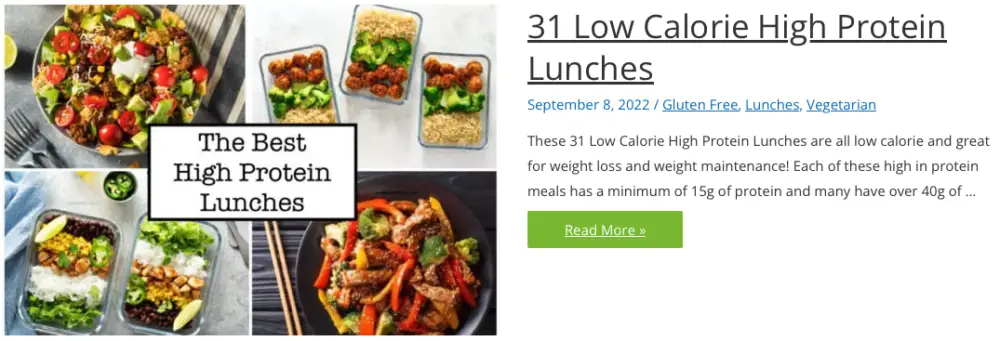



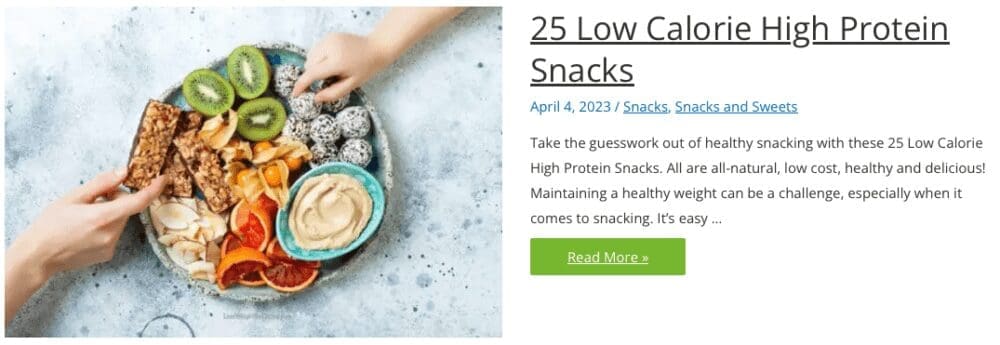

Lose Weight By Eating Cookbooks
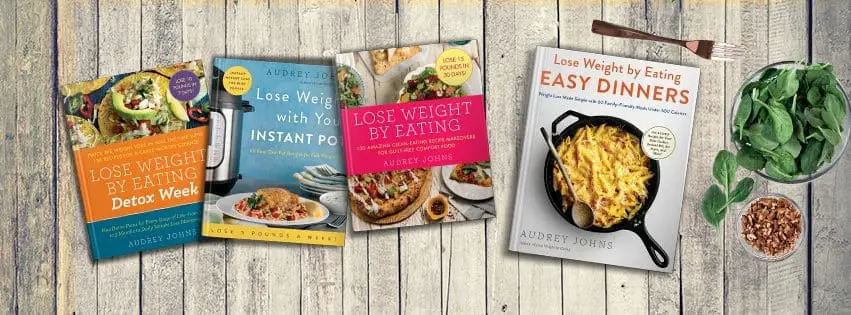

Share this Low Calorie Guide:
